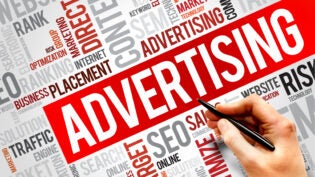
If you have your own business, one of the things that probably keeps you up at night is how to increase the amount of traffic your website receives.
A paid ads campaign can be one of the solutions.
And, indeed, it’s quite a good solution; Facebook ads, Instagram ads, LinkedIn ads, Twitter ads, Google Display network and AdWords can play into your hands if you know how to use them.
Alexander De Ridder, co-founder and CTO of Edgy Labs, offers valuable know-how into why paid ads don’t seem to work for everyone and how to maximize their potential.
Paid ads don’t work if…
No one knows your business
Before you plunge headlong into paying for advertisements, make sure your business has high user engagement levels so that people will actually be clicking on your ads.
If your audience don’t know who you are, your ads won’t catch their attention and this will inevitably lead to high cost per click rates.
Throwing money at paid ad campaigns will only make sense if you already have an established customer base who trust you and are interested in your products/services. Does your business rank high in Google search and boast killer brand awareness? Then paid traffic seems like the natural next step.
You don’t target the right audience
Targeting the wrong audience is as equally ineffective as having no audience.
Whether you like it or not, advertising exclusively to an audience who are most likely going to buy your products/services could save you a ton of money and time. It would prove to be much more cost-effective than spamming everywhere.
Therefore, you need to identify your niche audience: Where do they interact online? Which social media platforms do they use most? What about demographic factors?
In short, stop beating around the bush and go ahead and approach your ideal customer.
There’s a lack of cohesion between keywords, paid ad and landing page
If your paid ad, your landing page and the keywords your potential customers type into search engines are completely different entities, then you’re not going to fare well in the realm of paid aid campaigns. To put it another way, if someone clicks on an ad for a specific product, the link should not lead them to a general page with all the products that are available.
There should be cohesion between the text in your ads and the relevance of your landing page. Likewise, your customers’ search intent, that is, the intent behind the words they type into search engines should be aligned with your paid ad and your landing page. Any discrepancies can cause troubles (read: low conversion rates).
You don’t have a high-quality landing page
Another reason why paid ads fail is that the landing page simply doesn’t meet customer expectations, it doesn’t satisfy their needs. If visitors come to your site and can’t find what they’re looking for within a couple seconds, they’re going to leave your site and go to a competitor.
Speaking of seconds, your site must load within two seconds or less. If it takes three or more seconds, most of your potential customers will just give up and abandon the site (that’s how spoilt we humans are). Yes, one second CAN make a difference.
Fortunately, you can speed test your site online to determine whether your page loads fast enough, Google’s test my site is the go-to tool.
Another important determinant of quality is a highly organized user experience. If the design of your landing page is a mess, your would-be customers won’t think twice before turning on their heels. For instance, your calls to action should be as clear as day and positioned front and center on your site for easy navigation. Avoid using large, underutilized areas of whitespace in the central section of your site. You want to attract customers, not drive them away, right?
Author: Katarina Matiasovska
3244 Views












